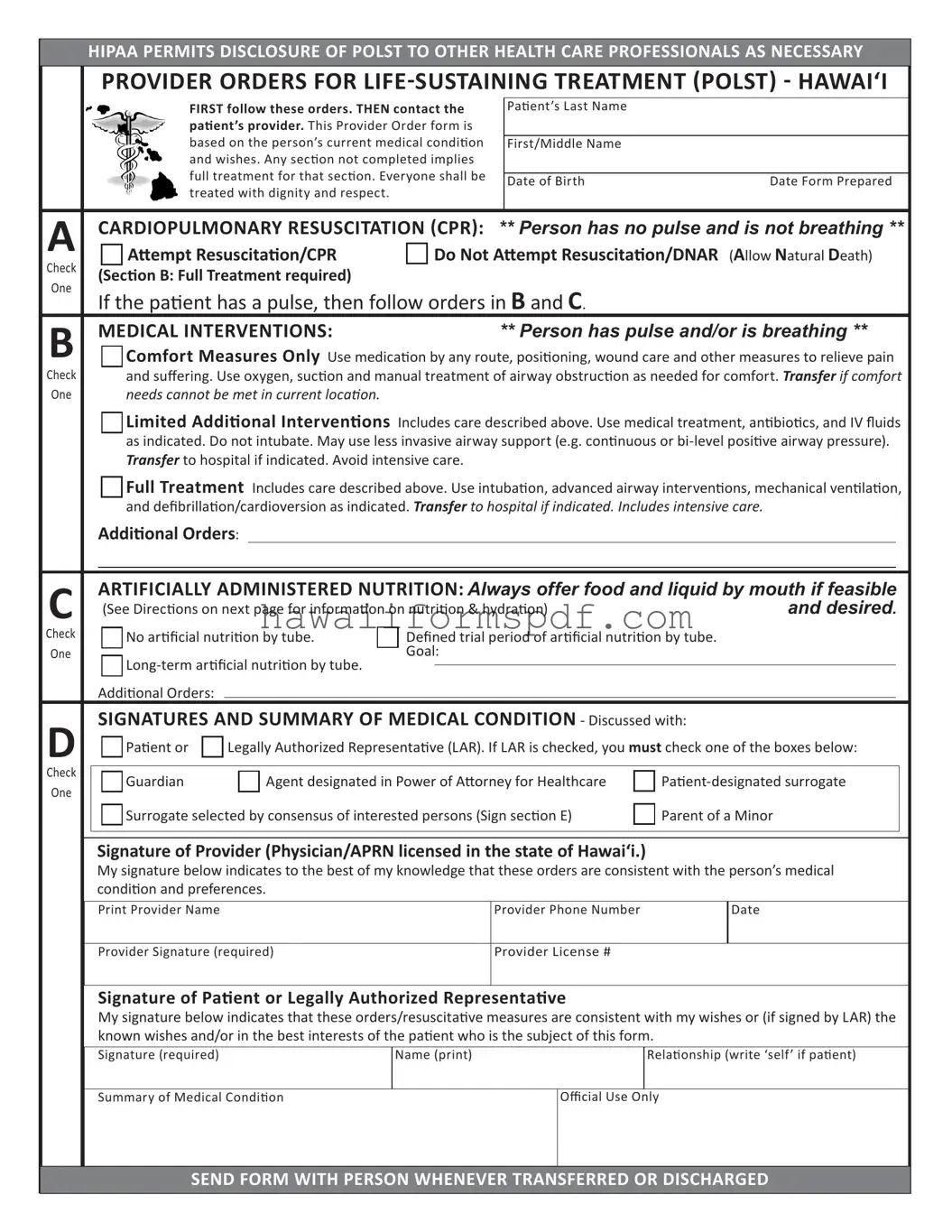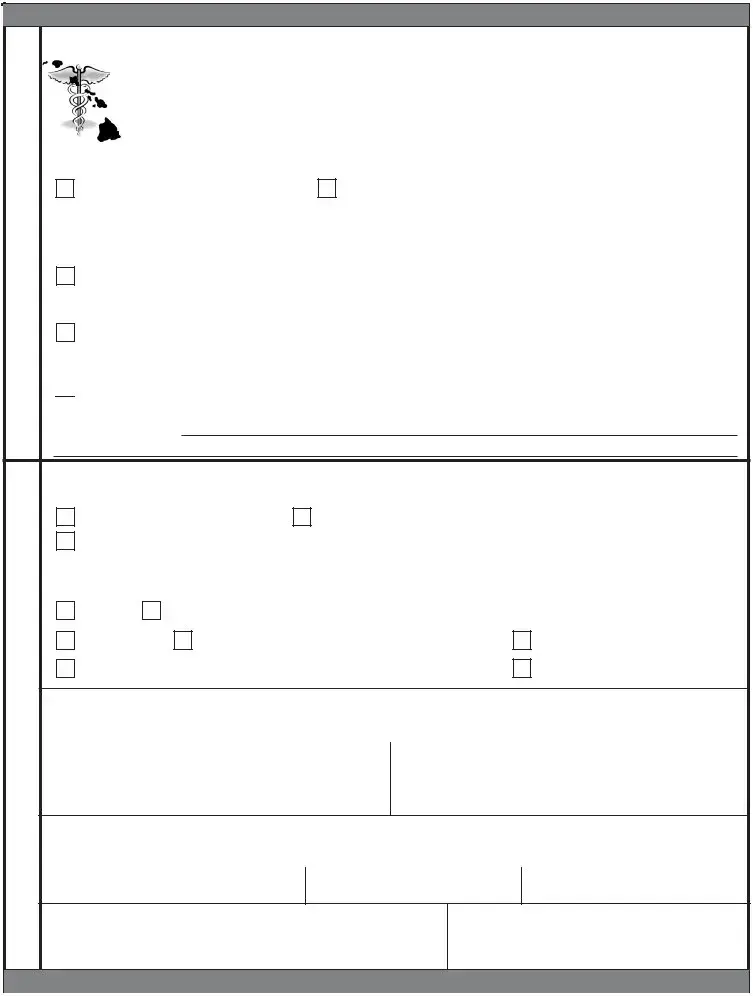•Must be completed by health care professional based on paient preferences and medical indicaions.
•POLST must be signed by a Physician or Advanced Pracice Registered Nurse (APRN) licensed in the state of Hawai‘i and the paient or the paient’s legally authorized representaive to be valid. Verbal orders by providers are not acceptable.
•Use of original form is strongly encouraged. Photocopies and FAXes of signed POLST forms are legal and valid.
Using POLST
• Any incomplete secion of POLST implies full treatment for that secion. Secion A:
• No defibrillator (including automated external defibrillators) should be used on a person who has chosen “Do Not Atempt Resuscitaion.”
Secion B:
•When comfort cannot be achieved in the current seing, the person, including someone with “Comfort Measures Only,” should be transferred to a seing able to provide comfort (e.g., treatment of a hip fracture).
•IV medicaion to enhance comfort may be appropriate for a person who has chosen “Comfort Measures Only.”
•A person who desires IV fluids should indicate “Limited Intervenions” or “Full Treatment.”
Secion C:
• A paient or a legally authorized representaive may make decisions regarding arficial nutriion or hydraion. However, a surrogate who has not been designated by the paient (surrogate selected by consensus of interested persons) may only make a decision to withhold or withdraw arificial nutriion and hydraion when the primary physician and a second independent physician cerify in the paient’s medical records that the provision or coninuaion of arificial nutriion or hydraion is merely prolonging the act of dying and the paient is highly unlikely to have any neurological response in the future. HRS §327E-5.
Reviewing POLST
It is recommended that POLST be reviewed periodically. Review is recommended when:
•The person is transferred from one care seing or care level to another, or
•There is a substanial change in the person’s health status, or
•The person’s treatment preferences change.
Modifying and Voiding POLST
•A person with capacity or, if lacking capacity the legally authorized representaive, can request a different treatment plan and may revoke the POLST at any ime and in any manner that communicates an intenion as to this change.
•To void or modify a POLST form, draw a line through Secions A through E and write “VOID” in large leters on the original and all copies. Sign and date this line. Complete a new POLST form indicaing the modificaions.
•The paient’s provider may medically evaluate the paient and recommend new orders based on the paient’s current health status and goals of care.
Kōkua Mau – Hawai‘i Hospice and Palliaive Care Organizaion
Kōkua Mau is the lead agency for implementaion of POLST in Hawai‘i. Visit www.kokuamau.org/polst to download a copy
or find more POLST informaion. This form has been adopted by the Department of Health July 2014
Kōkua Mau • PO Box 62155 • Honolulu HI 96839 • info@kokuamau.org • www.kokuamau.org



